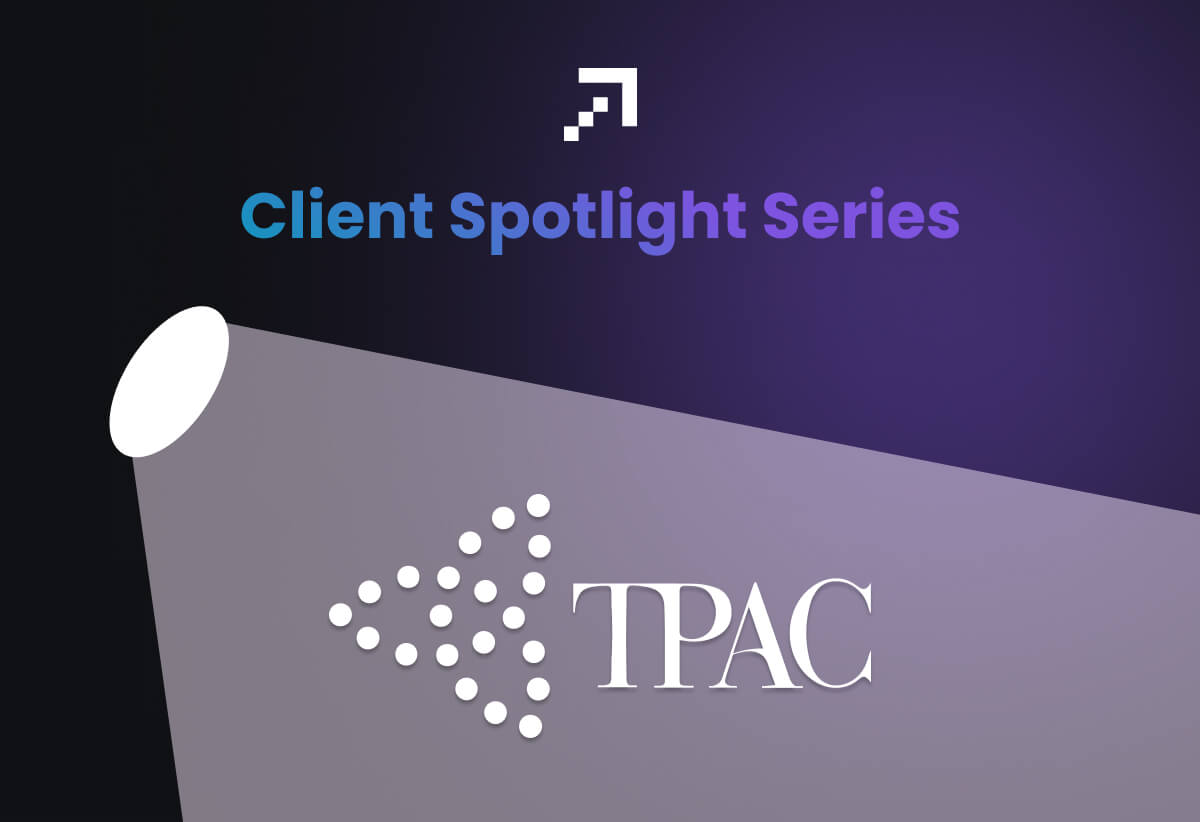
Client Spotlight Series: TPAC

Get Ready To Be Inspired!
Join us on this journey as we spotlight innovation, creativity, and the power of digital transformation. We’re proud to showcase our exceptional client work in the web and digital space. From captivating websites to groundbreaking digital products, we’re your trusted partner in turning ideas into digital brilliance.
TPAC Underwriters, Inc. has successfully helped employers control healthcare costs as their honest, transparent Stop-Loss partner for over 30 years. Stop-loss insurance is an insurance product that provides protection against catastrophic or unpredictable losses and is often purchased by employers that self-fund their employee benefits. When they were looking to transform the Stop-Loss process, they turned to Creed. Together, we’ve reimagined the process and delivered a custom, digital portal where their customers can now request and receive quotes in real-time (rather than 2-3 weeks).
Explore more of the project here: https://www.tpac.com/sleq
Below is the transcript of the video
Sarah: All right! It is a pleasure to be here with Greg and Ryan, two of our amazing clients from TPAC. I’d love to just start by asking you both to introduce yourselves [with] a little about your role at the company. Ryan, do you want to kick us off?
Ryan: Sure! Well, first, thanks, Sarah! My name is Ryan Newville. I am the Vice President of Technology and Risk Analysis at TPAC. Underwriters. TPAC is in the medical insurance business. We’ve been around for […] more than 30 years now. I’ve been here about 23 years… That’s a brief introduction.
Greg: I’m Greg. I’m on the technology team here, and I have been here a lot shorter, just a few years. But it’s been working with TPAC […] indirectly for about 15 [years].
Sarah: Wonderful. Well, we’ve been thrilled to partner with you both and your teams on this project Initiative. Would you be willing to describe it at a really high level, with maybe just a bit of background around your company and some of the opportunities that you identified which Creed was able to help partner with you on to help solve? Ryan, I don’t know if you want to kick us off and then Greg, maybe you could fill in some gaps just briefly.
Ryan: Sure. So in our business, we deal with employer groups around the country and they come to us for quotes for insurance and the current process is pretty cumbersome. We’ve always been frustrated at how hard it is for a group to come to us and get the data that we need and to provide a quote for them quickly and accurately. So we’ve dreamed for really a lot of years about improving the process, but really didn’t have the expertise here to do that. So part of what led us here was this frustration. Things weren’t working right. And then we brought in Greg a number of years ago and Greg quickly was like, “Yeah, this doesn’t work well. I’ve got some really practical good ideas on how to move this forward.” So I’ll let you jump in.
Greg: Yeah, so I’ve called it the fax machine industry because it is what it is… (laughs)
Some people have finally let go of their fax machines, but it’s the same thing: an encrypted email. It’s just taking your manila folder, writing, scribbling some scratches on it, scanning everything in, and sending it through some secure form. And it just has so many levels that at every spot, there’s somebody transcribing data that they are then printing, scribbling, sending, printing, scribbling on, sending. So it’s just this constant rework that everybody does. And we’re trying to take this process that is normally a 2 to 3 week experience and say, “What can we do about it? How can we make this more convenient, faster and approachable?”.
Sarah: Optimizing very manual workflows typically that have either disparate data or a number of stakeholders that are in that workflow certainly are a common challenge that a lot of businesses face. We’ve again been thrilled to partner with you and have our architects and engineers and designers help solve this problem. We recently did a beta launch and we’re out there with hopefully an optimized solution. Can you share maybe just briefly what your experience has been like working with our team and maybe even some initial feedback or results that you may be getting on the product that we’ve partnered with you on?
Ryan: Yeah, we have a pretty complicated space. Healthcare and health insurance is very complicated. And so, one of my concerns coming in was an outside entity coming in to help us. Would they be able to really understand and speak the language that we speak? Because it takes people a long time when we hire new people to get up to speed. So I was very impressed with the Creed’s team ability to really dig in, ask good questions, and quickly get up to speed and understand what it is we do here and what it is we were trying to build and how to solve the problem. I know I mentioned throughout the process several times to Greg, like, “Oh, they get it, they understand what we’re trying to do”. So the initial exploration of our problem, to the solution, and all the conversations. I was very impressed with the team’s ability to comprehend and get up to speed quickly. Greg, you want to talk more about the actual project?
Greg: Yeah, well, just to piggyback for a second on what you said, the Liz Wiseman in Rookie Smart talks about naive questions and it has been something that I’ve really experienced through the Creed team and not sure if anyone’s ever read that book or know who she is, but it’s really just trying to ask the questions that are assumptions and with how complicated what we were trying to do is, there were so many places where we just forgot about sections or forgot about questions or scenarios or how to address different things, [so] the naive questions really helped bring clarity to what we were trying to accomplish and how we were going to accomplish it. Just beyond that, there was just a lot of collaboration between our team and our developers and Creed’s team because it’s it was something that there were components that we had to do to get it to work inside our core tools and our systems. And then there was the whole establishing that external experience that Creed really helped come along to set a foundation for us there.
Sarah: Well it has been our complete pleasure to partner with you. We’ve enjoyed certainly learning about your solutions and challenges and helping create what we believe to be a really exceptional tool and excited to continue in partnership. Thank you for making time for us today.